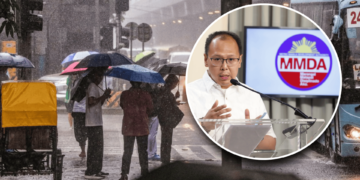The Philippines emerged as the epicenter of the world’s fastest-growing HIV epidemic, a shocking revelation that’s sending ripples through global health circles.
A viral YouTube exposé by the Peanut Gallery Media Network, released on June 18, 2025, titled “The World’s Worst HIV Outbreak is Now in the Philippines—and It’s Powered by PRIDE,” has ignited fierce debate, spotlighting a 500% surge in cases over the past decade.
With 56 new infections daily, primarily among young men aged 15–25, the nation teeters on the brink of a public health emergency that demands urgent action
The Philippines, once a low-prevalence country for HIV, now reports over 2,300 new cases monthly, according to the Department of Health (DOH), with a staggering 80% linked to men who have sex with men (MSM).
The PGMN video, anchored by Sexual and Reproductive Health Physician, Dr. KC Halili, points to cultural shifts, including the rise of PRIDE events and dating apps like Grindr, as key drivers, arguing they’ve normalized high-risk behaviors.
The epidemic’s rapid spread among youth could prompt a national emergency. Health experts, however, stress a broader picture: limited sex education, stigma around testing, and low condom use—only 30% of MSM report consistent use—fuel the crisis.
Manila and Davao City are the hardest hit, with HIV prevalence among MSM in urban areas soaring to 15%. The DOH’s 2024 data reveals 143,000 total cases, with 12,000 deaths since the epidemic’s onset.
Antiretroviral therapy (ART) coverage lags at 65%, hampered by supply shortages and cultural barriers, leaving many untreated.
Dr. Halili.critiques government inaction, alleging that political sensitivity around PRIDE and gay culture has delayed robust interventions.
Meanwhile, health officials counter that underfunded programs and late diagnoses—40% of cases are detected at advanced stages—are the real culprits.
Young Filipinos, particularly Gen Z, face the brunt. Social media and dating apps have surged in popularity, enabling casual encounters but outpacing public health campaigns.
“We’re seeing kids as young as 15 testing positive,” a Manila clinician shared anonymously. Stigma remains a hurdle; many avoid testing due to fear of social ostracism or family rejection.
The Catholic Church’s influence, which often discourages open discussions on sexuality, complicates prevention efforts. Yet, grassroots groups like LoveYourself are fighting back, offering free testing and counseling, though they’re stretched thin.
The crisis has sparked calls for emergency measures. Experts urge scaling up ART access, launching nationwide education campaigns, and destigmatizing testing.
The PGMN video’s controversial framing, tying the epidemic to PRIDE, has polarized viewers. Regardless, the numbers don’t lie: without swift action, the Philippines risks a full-blown catastrophe.
As the world watches, this escalating epidemic demands a united response to save lives and rewrite the nation’s health story.












